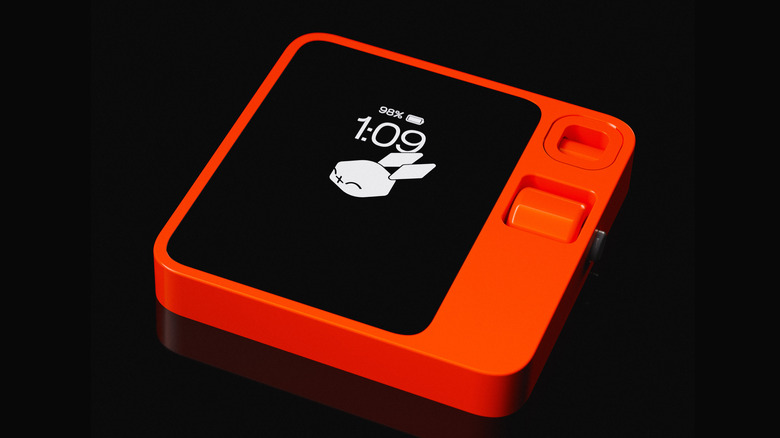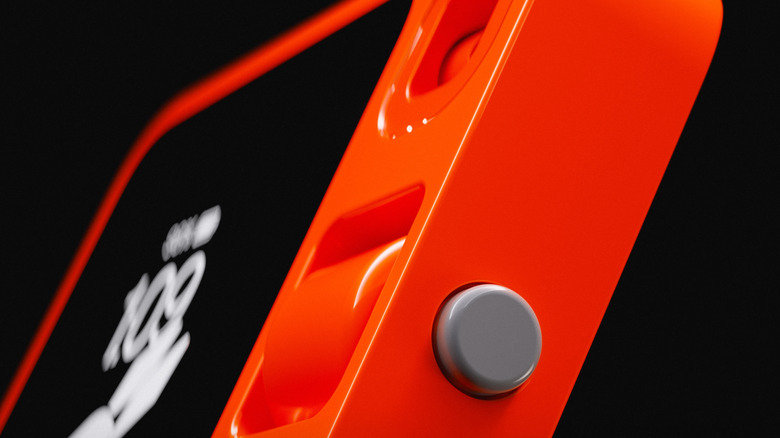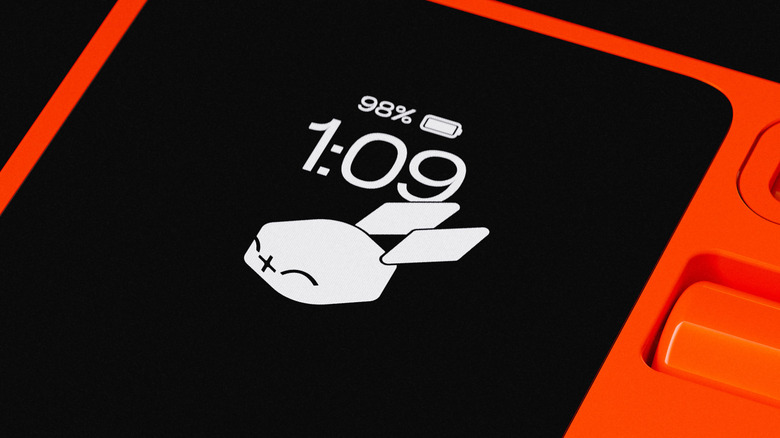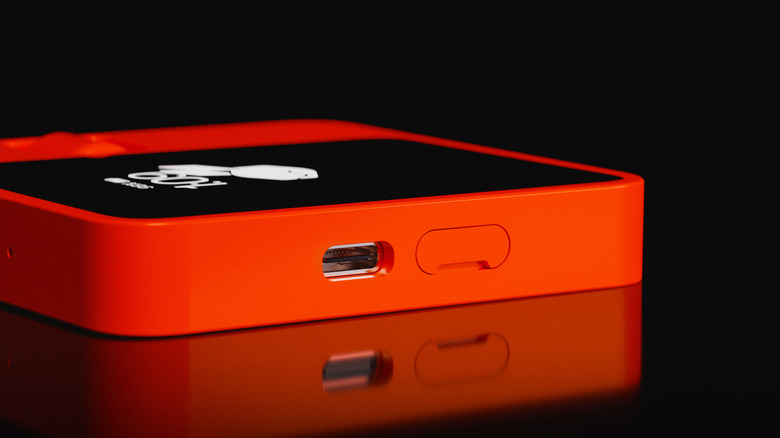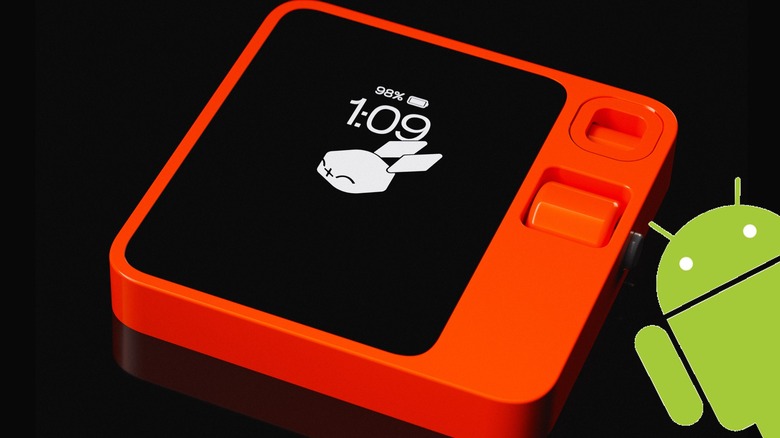The Rabbit R1 AI Gadget Had A Wild Launch: What You Need To Know
When the smartphone-replacing Rabbit R1 AI gadget was first revealed at CES earlier this year, it seemed like it had a shot at being the next big thing. Its eye-catching, fluorescent-orange hardware, designed in collaboration with too-cool-for-school design firm Teenage Engineering, had people chattering. Inside that candy-shell casing was a new kind of AI called rabbit OS that promised to eliminate smartphones without forcing us to give up the apps we love — all of that for only $199.
After the launch of the Humane AI Pin was followed by near-universal scorn from reviewers, it seemed like the Rabbit R1 had an open lane to victory. All it needed to do was prove it could deliver a better product for a fraction of the price. Although it has hopped over that admittedly low bar, the R1 isn't exactly leaping into new territory.
Over the past few months since the R1's announcement, and especially since its late April launch, the bright-orange AI box has perplexed the public. First, there were Rabbit CEO Jesse Lyu's attention-grabbing claims about the device's capabilities when he unveiled it at CES in January. Then, at the launch event on April 23, those in attendance were left miffed by the proceedings, and after spending enough time with it to pen reviews, they were downright dismissive. But that wasn't the end of the story. As people dug around under the R1's hood, a massive scandal was uncovered that now rocks the fledgling company. So, from first promises to current revelations, let's break down the wild saga of the Rabbit R1.
Rabbit has ambitious plans for the R1
In theory, the Rabbit R1 sounds like the next generation of computing. In his presentation at CES in January, Lyu posited a future in which AI uses apps so you don't have to. He demonstrated what Rabbit calls the "Large Action Model," or LAM, which learns how to navigate apps similarly to how large language models (LLMs) like ChatGPT learn English. He demoed how users would be able to "teach" the model to navigate interfaces, enabling it to turn your words into actions. For instance, he showed off how the LAM could use the Midjourney AI image creator, which would otherwise require opening Discord, navigating to the Midjourney server, and typing a prompt.
Of course, the R1 was also promised to be multimodal, meaning that it could process not only speech and text but also photos, videos, and other mediums. Lyu demoed how pointing the R1 at a computer screen would allow the device to give you contextual information or how you could use it to catalog items in a refrigerator. These are capabilities already available in other AIs, but combined with the LAM, Rabbit seemed as though it had innovated something truly new.
All of that was great in theory, but until people could actually get their hands on a Rabbit R1, it was all vaporware. How the public would react when Rabbit's paws hit the ground was another story, one that began with a somewhat strange launch event in New York City.
The Rabbit R1 had a strange, swanky launch event
On April 23, members of the press and early adopters headed to the elegant TWA Hotel in Queens, New York, to catch some Rabbits. The dress code? Retro-futuristic, just like the cute little Tamagotchi-esque R1 itself. Spirits were reportedly high as Jesse Lyu took the stage, although the lack of seating had people complaining of foot and back pain.
Over the next hour and a half, Lyu demonstrated the different capabilities of the R1, which included ordering food on DoorDash and nearly sending a random Uber driver on a wild goose chase to a nonexistent rider. Then, Lyu released the initial batch of R1 devices to the crowd. They rolled out on conveyor belts, clad in carrying cases designed to evoke cassette tape cases (if you don't know what a cassette case looks like, how does it feel to have your whole life ahead of you?) and which apparently have to be aligned ever so precisely to extract the R1 from within. Other accessories were also teased, including a sling bag, a fanny pack, and a T-shirt with a pocket custom-made for the R1.
Rabbit R1’s are delivered to pick up party attendees via a conveyor belt like rotation sushi in Japan pic.twitter.com/8oYHRbD5zy
— Saul Lowery ᯅ (@S_Lowery) April 24, 2024
So far, a little odd, but befitting a device like the Rabbit R1. But then people left the hotel, started using the device for real, and the shine quickly started to wear off (even if that bright, candy-shell orange remained just as appealing). Lisa Marie Segarra, writing for PetaPixel, called the event "a show devoid of substance."
The Rabbit R1 launched to mostly disastrous reviews
Following in the footsteps of the Humane AI Pin, the Rabbit R1's early days have seen a slew of negative first impressions . By now, the complaints about AI gadgets are becoming familiar: They take forever to respond to some prompts, and many answers are confidently wrong. It turns out Rabbit hasn't solved these fundamental flaws with current-generation AI, and the R1 suffered for it in the eyes of reviewers. Marques Brownlee, one of the most popular YouTube tech reviewers, called the device "barely reviewable."
Meanwhile, many of Lyu's bold claims have yet to materialize, including there are 800 apps being optimized for the device. At launch, the device supported only four apps — Spotify, Uber, DoorDash, and Midjourney — but reviewers reported that Uber and DoorDash were extremely poor experiences on the R1, while Spotify was merely frustrating.
Reviewers were upset at what many called an undercooked product running on dated hardware (it is powered by a 2.3 GHz MediaTek Helio P35 processor), and claims of poor battery life proliferated across different reviews. (A recent software update appears to have somewhat improved battery life). Although the device includes a small touchscreen, it is perplexingly only available to use some of the time, leaving a small scroll wheel as the only way of navigating its interface. Overall, reviewers found its appeal surface deep but are hopeful that the R1's underlying tech will improve as time goes on. Others think it could have just been an app. And, regarding that last critique, you'll never guess what happened next.
The Rabbit R1 was secretly an Android app all along
The Rabbit R1 was already in hot water after its bizarre launch event and initial poor reviews, but then an even bigger scandal hit. In the months leading up to its launch, the question floating around online was, "Why does the hardware need to exist? Can't this just be an app?" Well, it turns out that it might have been nothing but an app all along.
Mishaal Rahman at Android Authority managed to download the R1's interface to a Google Pixel phone from an APK file, apparently proving that the R1 is an Android device running a single app. Lyu responded with haste, lambasting the allegations, claiming that Rahman had discovered nothing more than a "bootlegged APK," and warning users that installing this app would "steal your data." However, Android Authority published a follow-up investigation the very next day confirming that the R1 runs on Android 13, which was proven by checking the metadata from Rabbit's official R1 update package. While Lyu wasn't technically lying about Rabbit's LAM running on the cloud — the R1's internals are far too lackluster to handle AI tasks — he was certainly obfuscating the fundamental nature of his supposedly innovative device.
The Rabbit R1 specifically runs Android 13, according to the metadata for the OTA from v0.8.67 to v0.8.77 of RabbitOS.
The security patch level (SPL) of v0.8.77 of RabbitOS is May 2023.
(In case you're wondering, the build fingerprint post-OTA is… https://t.co/qVFA9dGJDU
— Mishaal Rahman (@MishaalRahman) May 1, 2024
The takeaway from this is that Rabbit probably could have launched the R1 as a standalone app for your phone. Most SlashGear readers are frequent phone upgraders, so your current device is probably far more powerful than the R1 anyway. However, launching on the Play Store would have meant submitting to Google's oversight, and with the search giant likely to announce a slew of AI features integrated directly into Android at the upcoming Google I/O conference on May 14, it appears that Rabbit saw proprietary hardware as the only competitive lane it could occupy.
